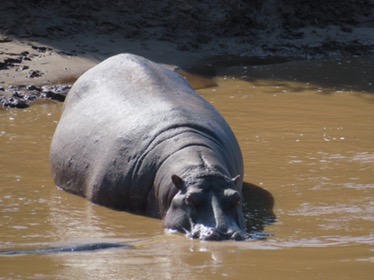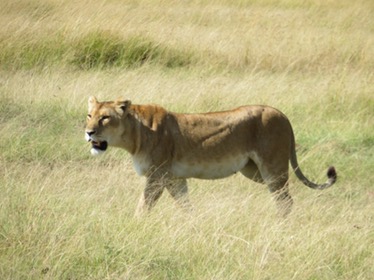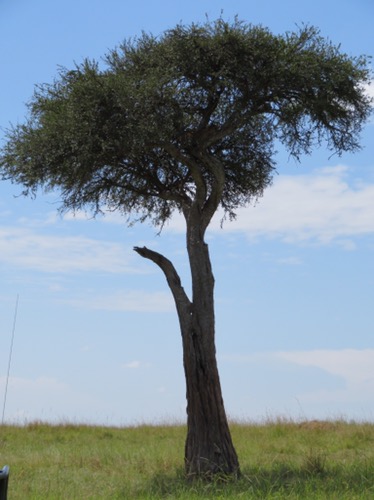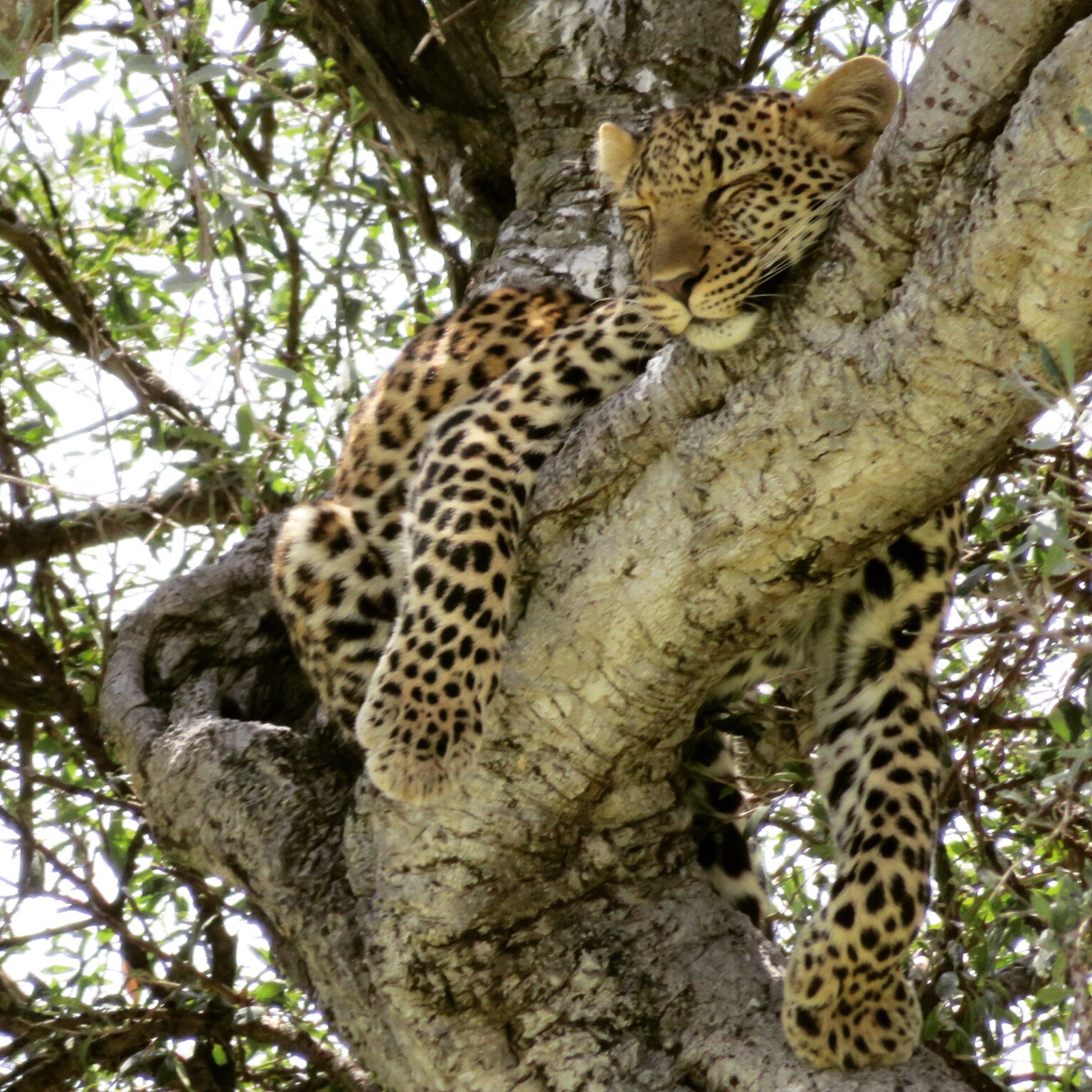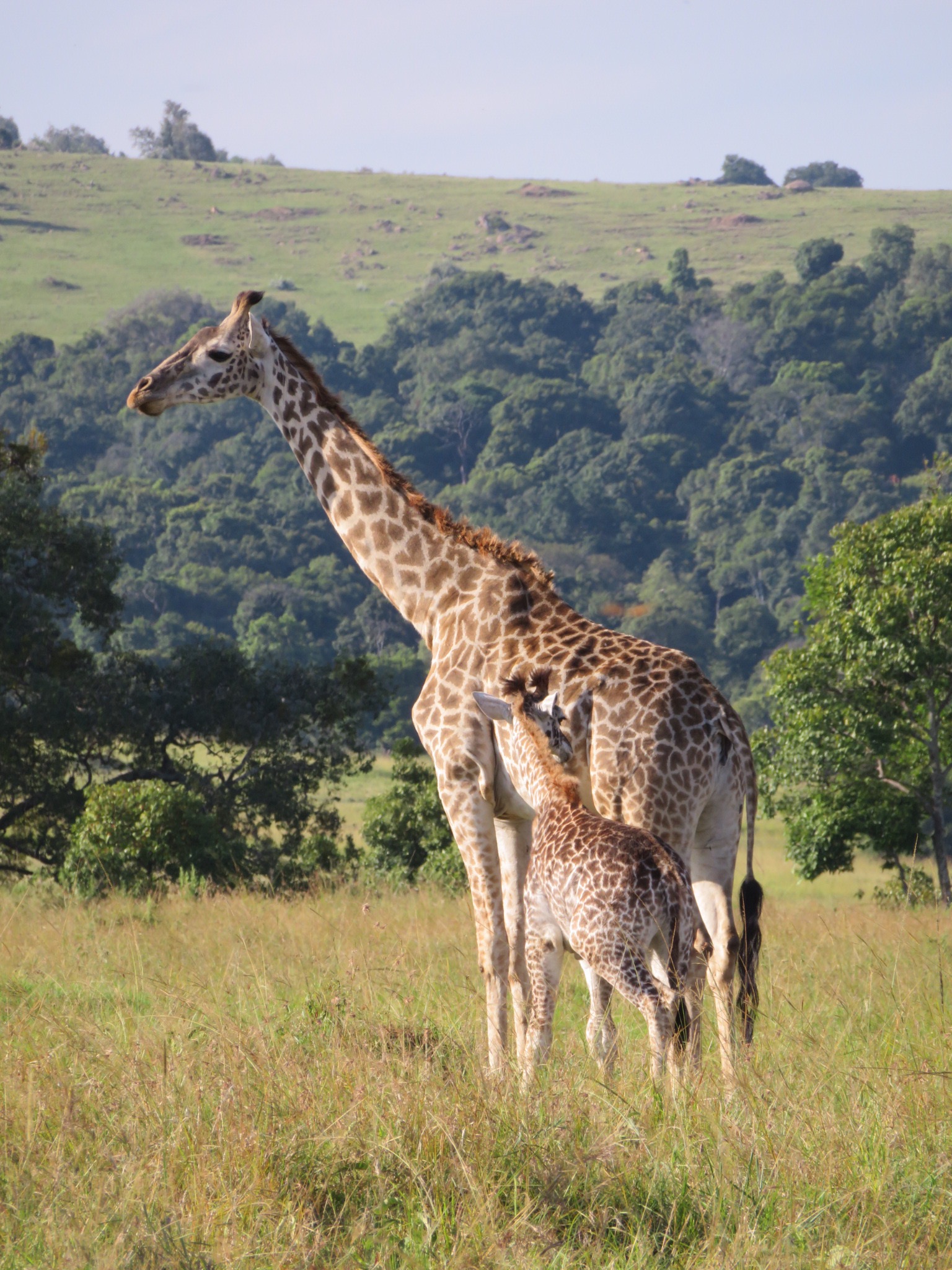At Solio Lodge we’d ticked lion, rhino and water buffalo (still in my mind the pretender of the group) off the list and knew we would have no trouble finding elephants on the Mara. (Despite seeing the baby elephants in Nairobi a few days prior we needed to see them in the wild before they qualified as a tick in the Reid-Giles Safari Spotting Guidelines.)
Leopard however was going to prove a more difficult challenge – or so we thought. We arrived at Angama Mara, a beautiful camp at the top of the escarpment over looking the Mara after the zebras and giraffe were cleared from the runway.

After dropping our bags off at our family tent – I would definitely revoke my ban on camping holidays if all tents looked like this! – we began the 30 minute drive down the side of the mountain to reach the reserve. Definitely no sitting on the roof for this one, it’s quite a hair raising ride!
Along the way we encountered so many elephants, often having to pause while they crossed the track and occasionally staring us down before they’d deign to move off the track to let us pass. We weren’t going to argue, we were more than happy to sit it out and wait!
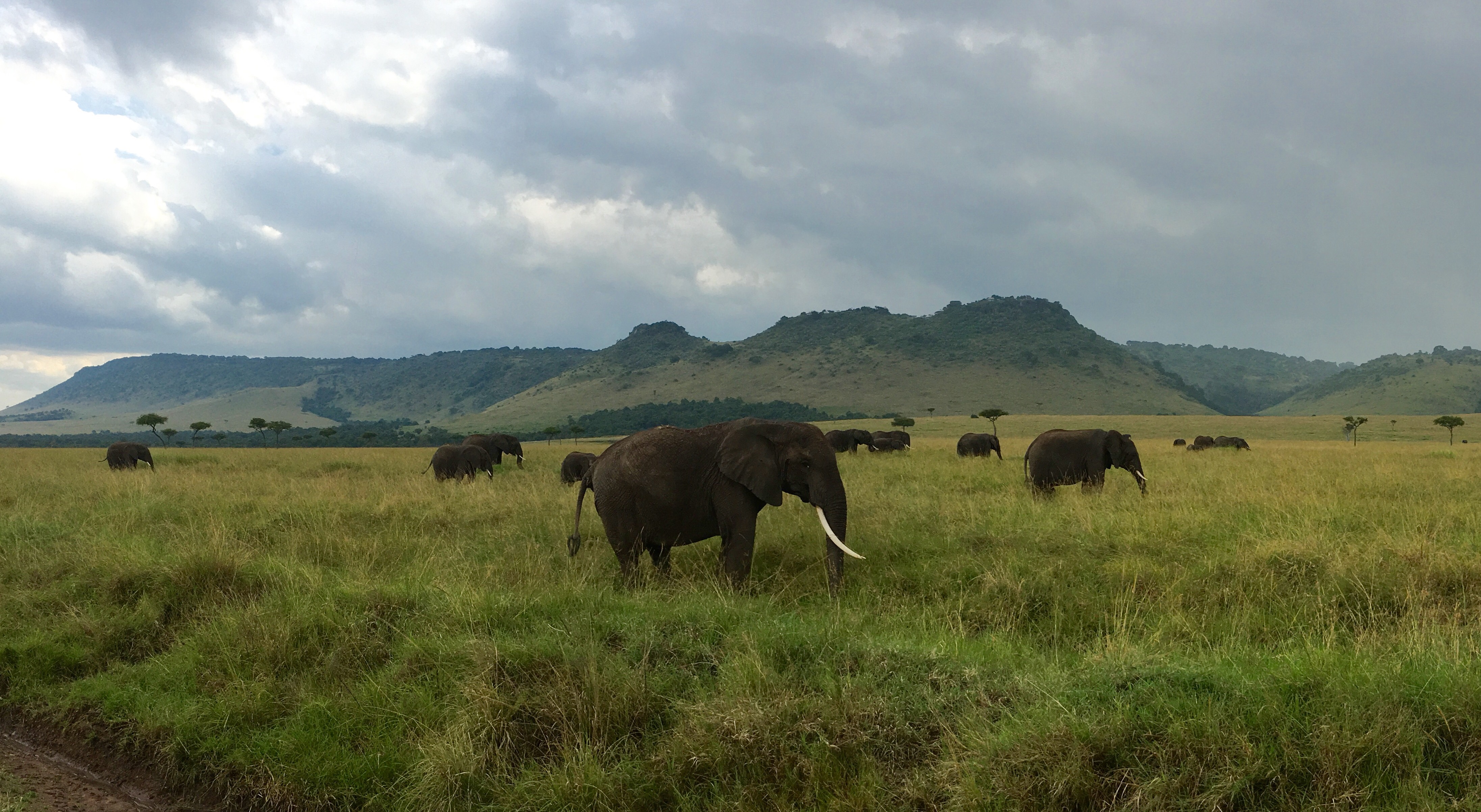
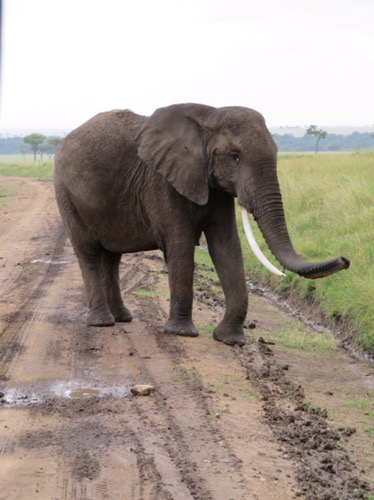

Literally a couple of hundred meters from the reserve entrance we came across a tree with an impala’s legs dangling down, stashed up there by the leopard who’d killed it earlier.
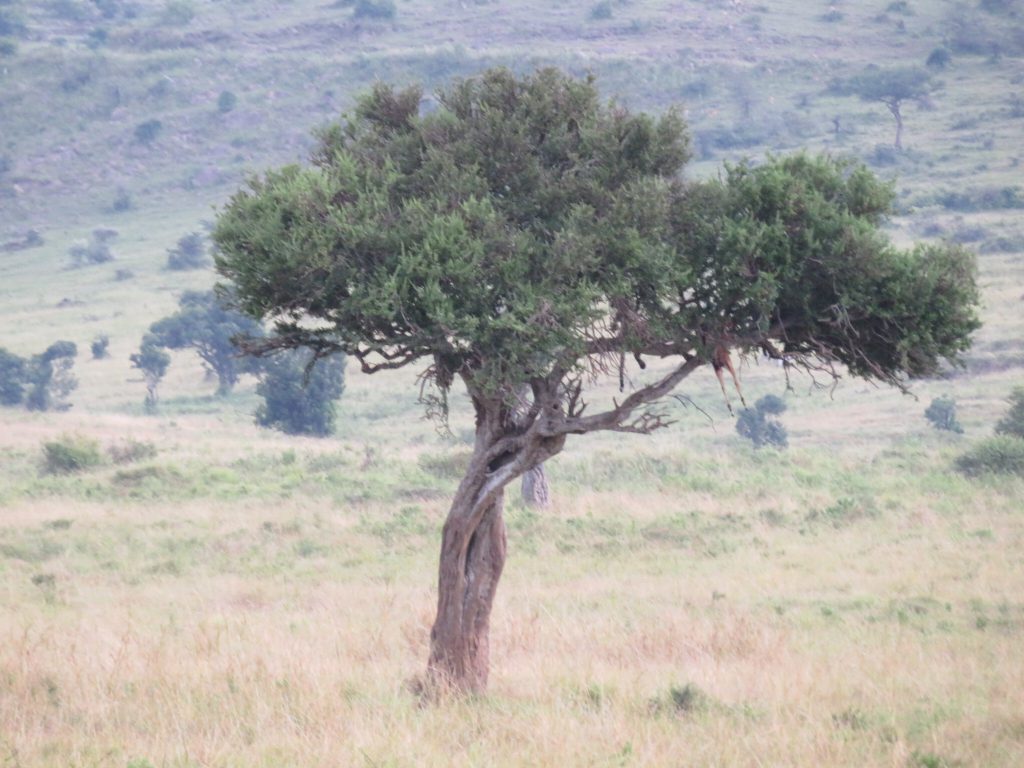
After waiting patiently for about 15 minutes we were about to move on when Stuart spotted a movement in the grass beneath the tree, and the leopard appeared, climbed the tree and settled down for a bit more dinner.
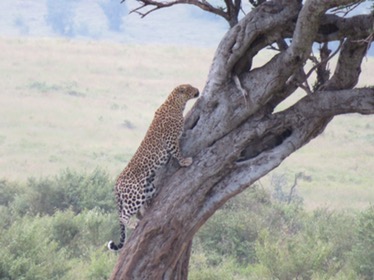

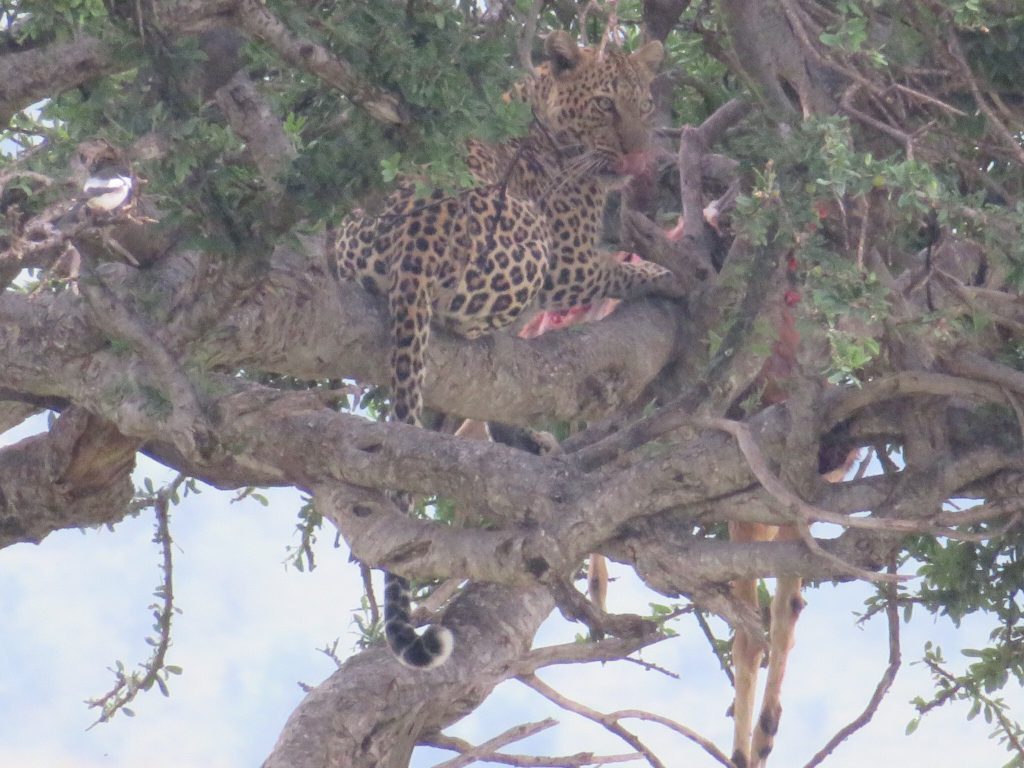
With the knowledge that our quest was complete, we could now relax, sit back and enjoy the absolute bonanza of wildlife that the Mara served up for our viewing pleasure.
There were giraffes, elephants, zebra, all of the antelopes from Solio plus one we hadn’t seen previously, the river buck, even hyenas who were nowhere near as ugly in real life as in The Lion King.
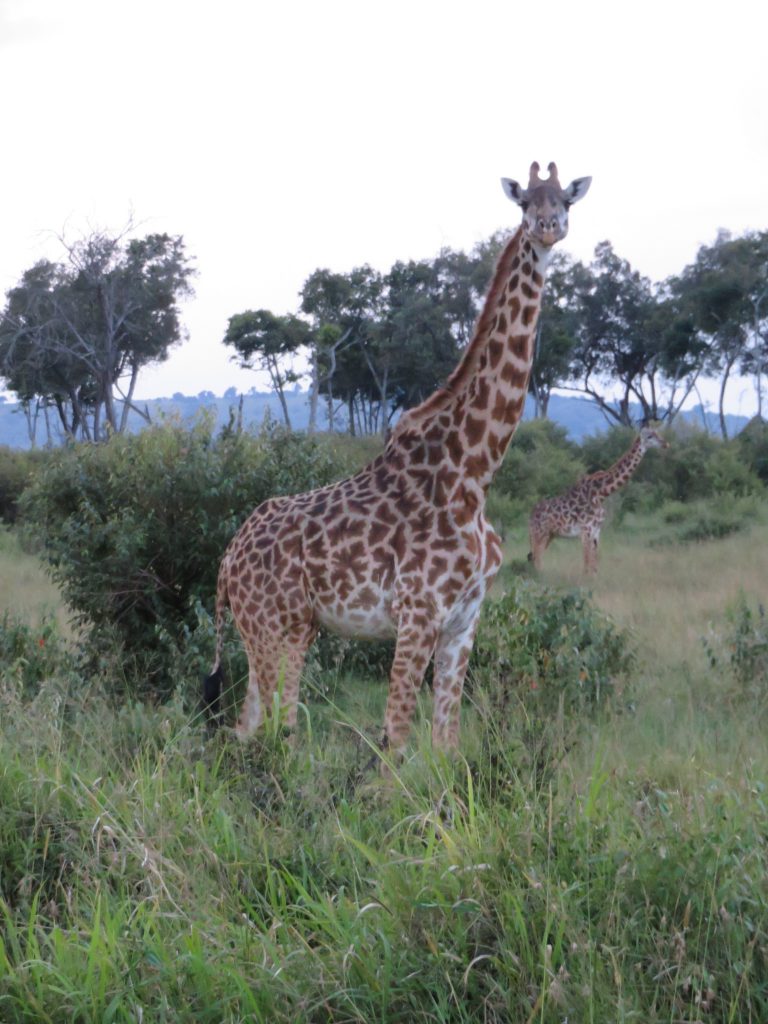
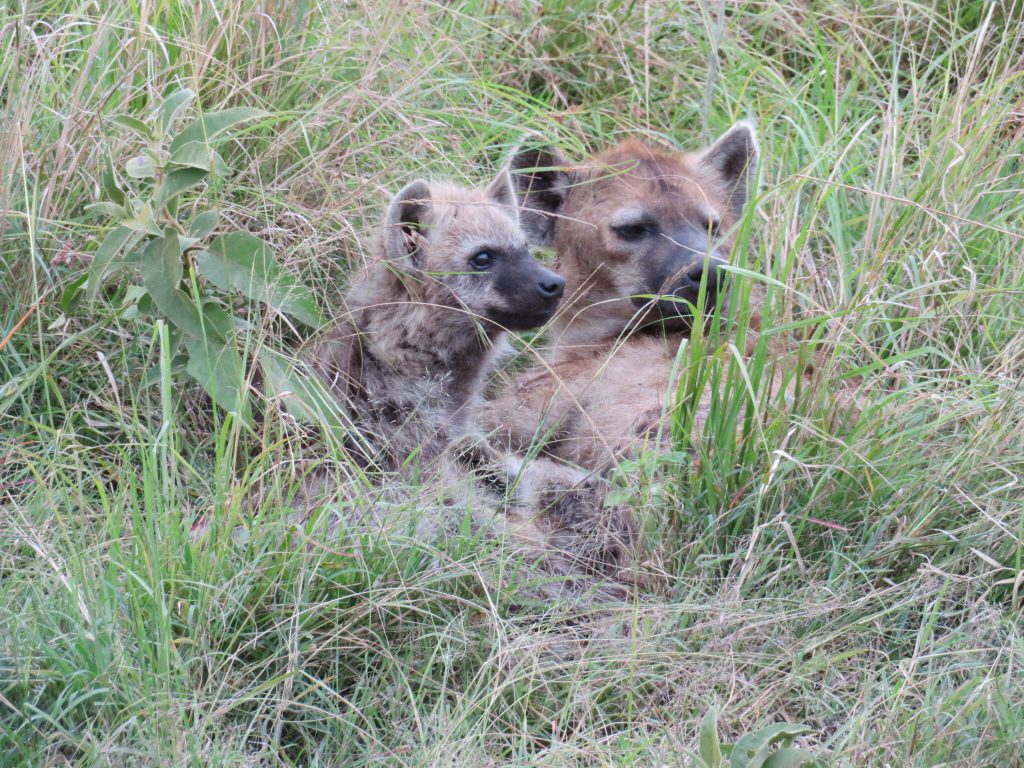
The national bird of Kenya, the lilac breasted roller was a colorful but noisy presence, and the beautiful crown cranes who pair for life were also frequent sightings.
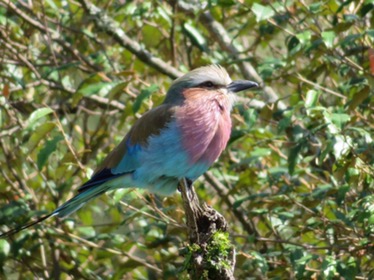

The wildebeest migration was just starting at the very southern tip of the Mara, so our lovely guide Douglas suggested we plan a full day out and head south to see if we could see it.
It had been too cold the previous evening for the hippos to be out on the banks of the Mara river, so with plenty of beautiful early morning sun we headed there first with Douglas confident there’d be no shortage out and as always he was completely correct.

As well as hippos there was a crocodile lazing in the sun, protecting its eggs from anything foolish enough to try and steal them.
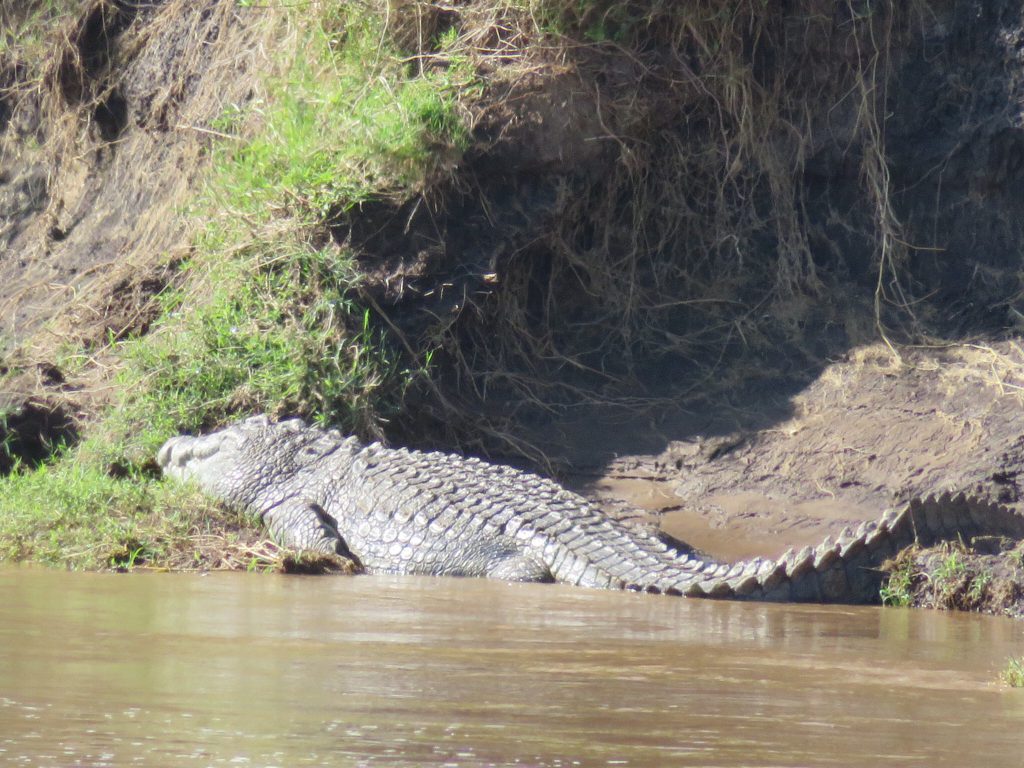
We headed south into the plains, and before long Douglas had spotted a group of giraffe and impala all facing the same direction. The reason soon became apparent as he saw a lion in the grass, Stuart spotted a second one just behind it and we were off, racing towards the action. The potential prey saw the lions shortly after we did and turned and bolted, with the lions in hot pursuit. Our line was taking us between lions and prey, which I wasn’t sure was a great idea but Stuart suggested Douglas probably had a fair idea what he was going and I should just focus on taking pictures. My heart was racing so fast I was having trouble holding the camera still as we got close by to the lioness and what turned out to be a young male she was training to hunt, but they quickly illustrated they had very little interest in us at all, being far more focused on looking for another potential target with much tastier meat than ours.
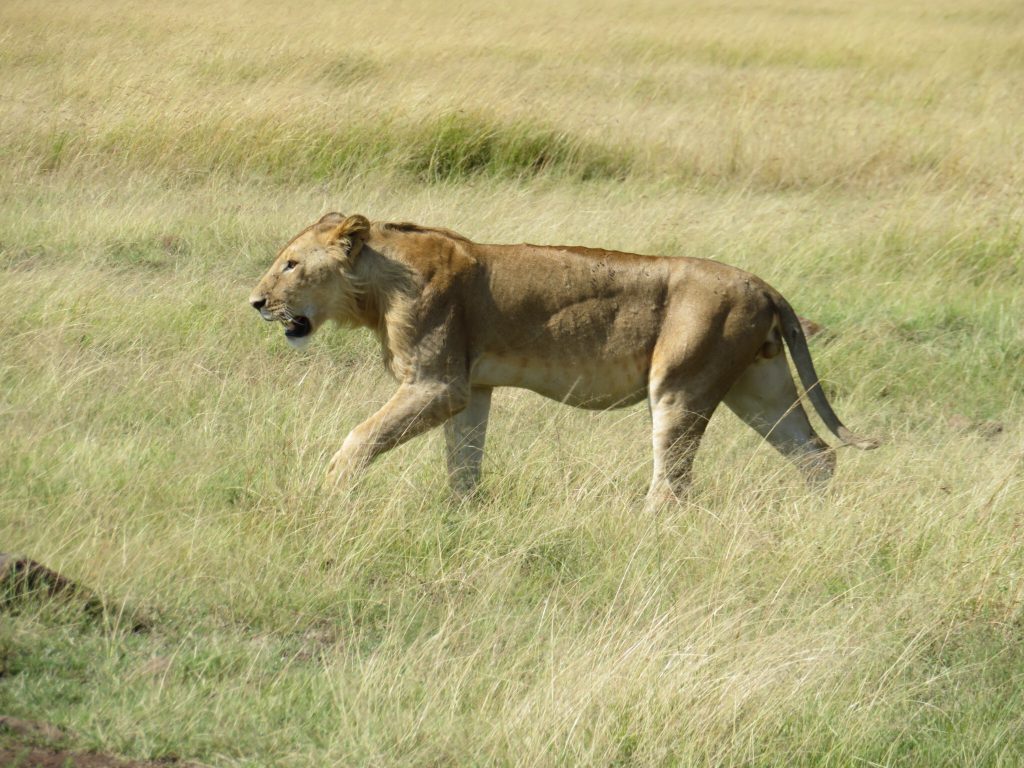

Once we’d got ourselves a far enough distance away it was definitely time for coffee and a biscuit, served up in the shade under one of the trees that dot the Mara.
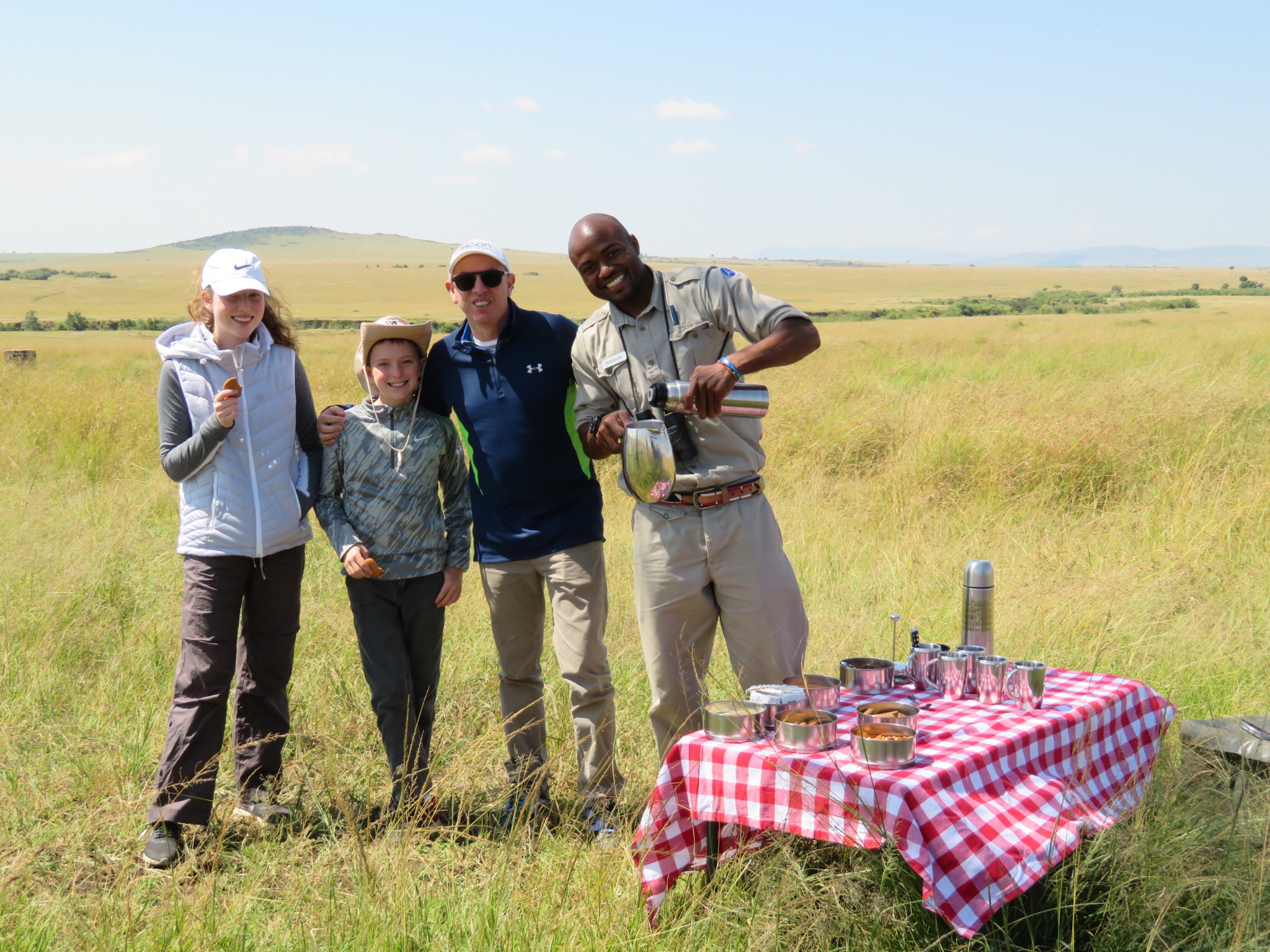
It was a lion kind of day though, because before we’d driven too much further we came across another pride of 8 lions resting in the grass.
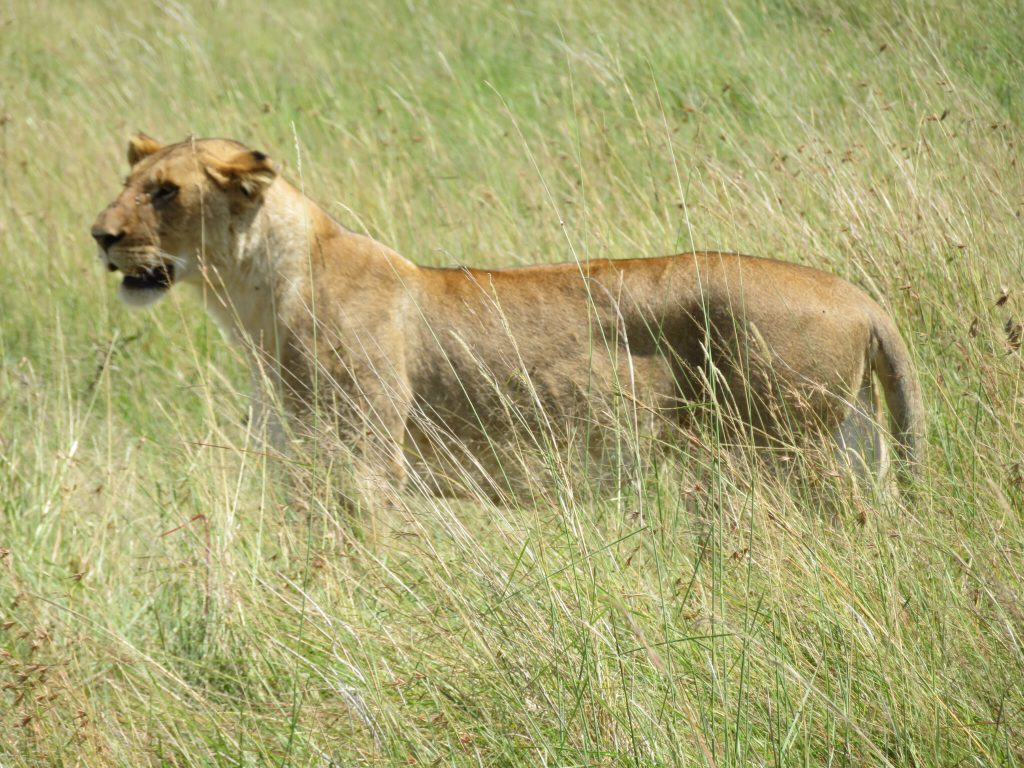
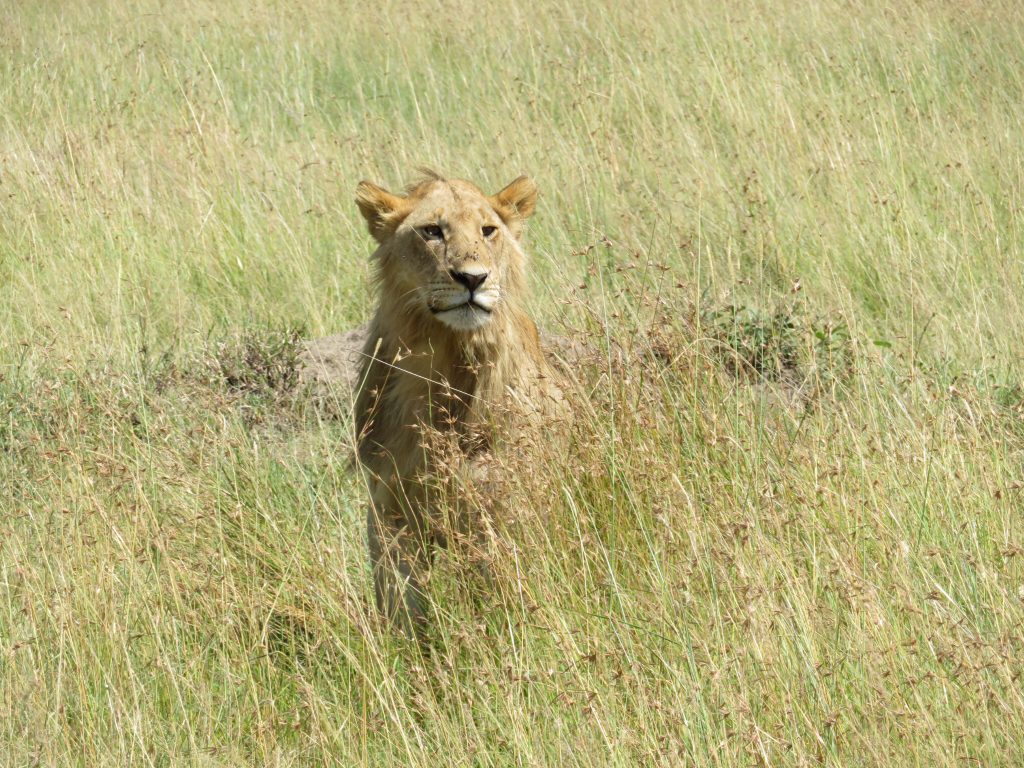
A couple got up and started to lazily walk off, and Douglas had a feeling as to where they might be headed so we raced off down the track, hanging on for dear life before coming around a corner, stopping the engine and seeing the first lion appear out of the grass just a few meters ahead of us. It barely gave us a glance, crossing the track so close to the car that we could have reached out and touched it – not that hard given there are no doors and windows! – and we sat in stillness with just my shutter finger moving as all eight followed the same path.
All humbled by such a close encounter with the king of the jungle, we continued south to see if we could find the wildebeest. The gatehouse attendants at the Mara River bridge confirmed there were wildebeest across the river, so we set off on the lookout for those but the radio crackled to life with the news that there was a leopard hunting prey so we abandoned the wildebeest for the time being and hung on for another wild ride to see if we could track down the leopard.
It turned out we could kill two birds with one stone as the leopard had been hunting wildebeest. By the time we arrived it had admitted defeat and retired up a tree for a snooze, but when it woke up its watchful gaze meant those wildebeest best stay on their toes for the afternoon as they were definitely still on the menu.
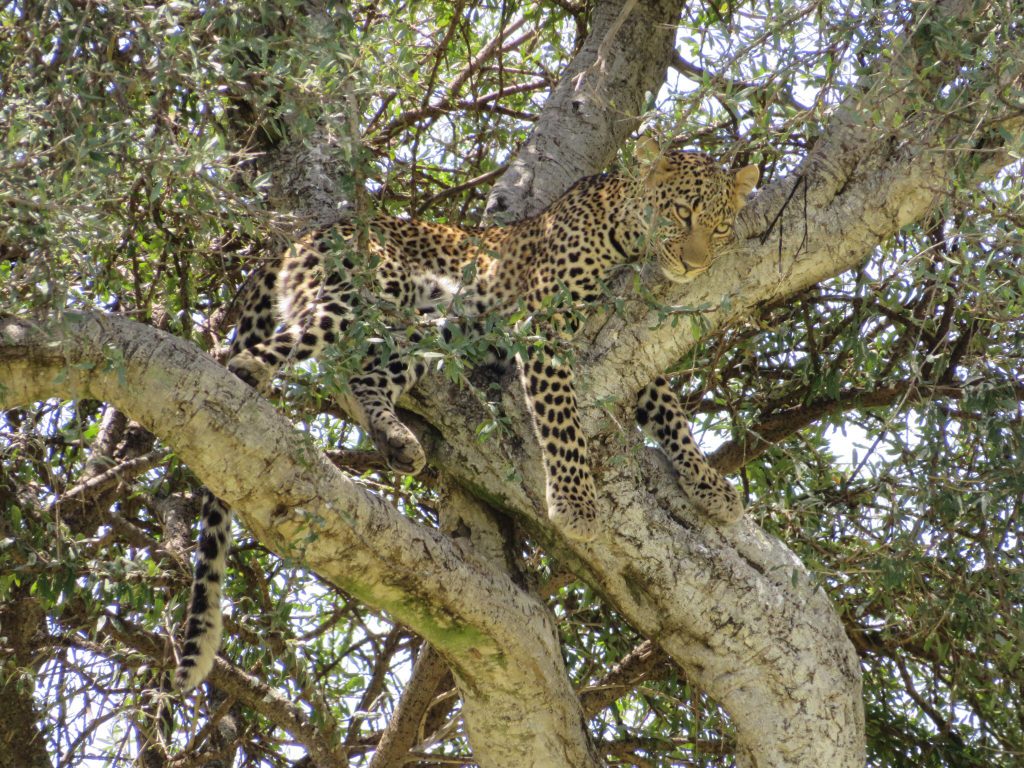
We left the leopard in its tree and set up our own lunch camp amongst the wildebeest – a different herd, far enough away to ensure there was no chance of the leopard joining us for a snack.

The wildebeest are definitely one of the oddest looking animals in Africa. Douglas told us that legend has it God got to the end of creation, gathered up all of the leftover animal parts and used them to make the wildebeest and you can definitely see how that story came to bear.

They are so noisy and there are so many of them, it must be an amazing sight when the full migration is underway and 2 million of the arrive on the Mara.
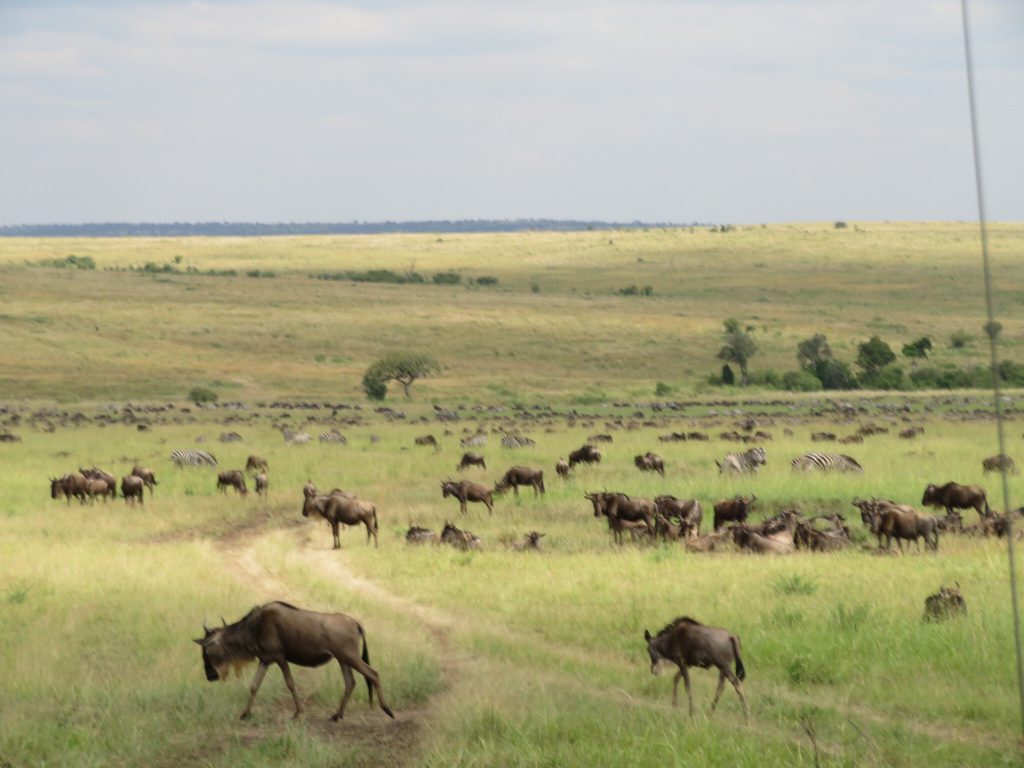
We were more than happy though with the amazing array of wildlife we’d seen during our short stay in Kenya, we well and truly ticked the Big Five box and can’t wait to come back and do it all again. Everyone warned us that your first trip to Africa won’t be your last, and we’ll be back again for sure to see more of this beautiful country, it’s lovely people and it’s incredible wildlife.


